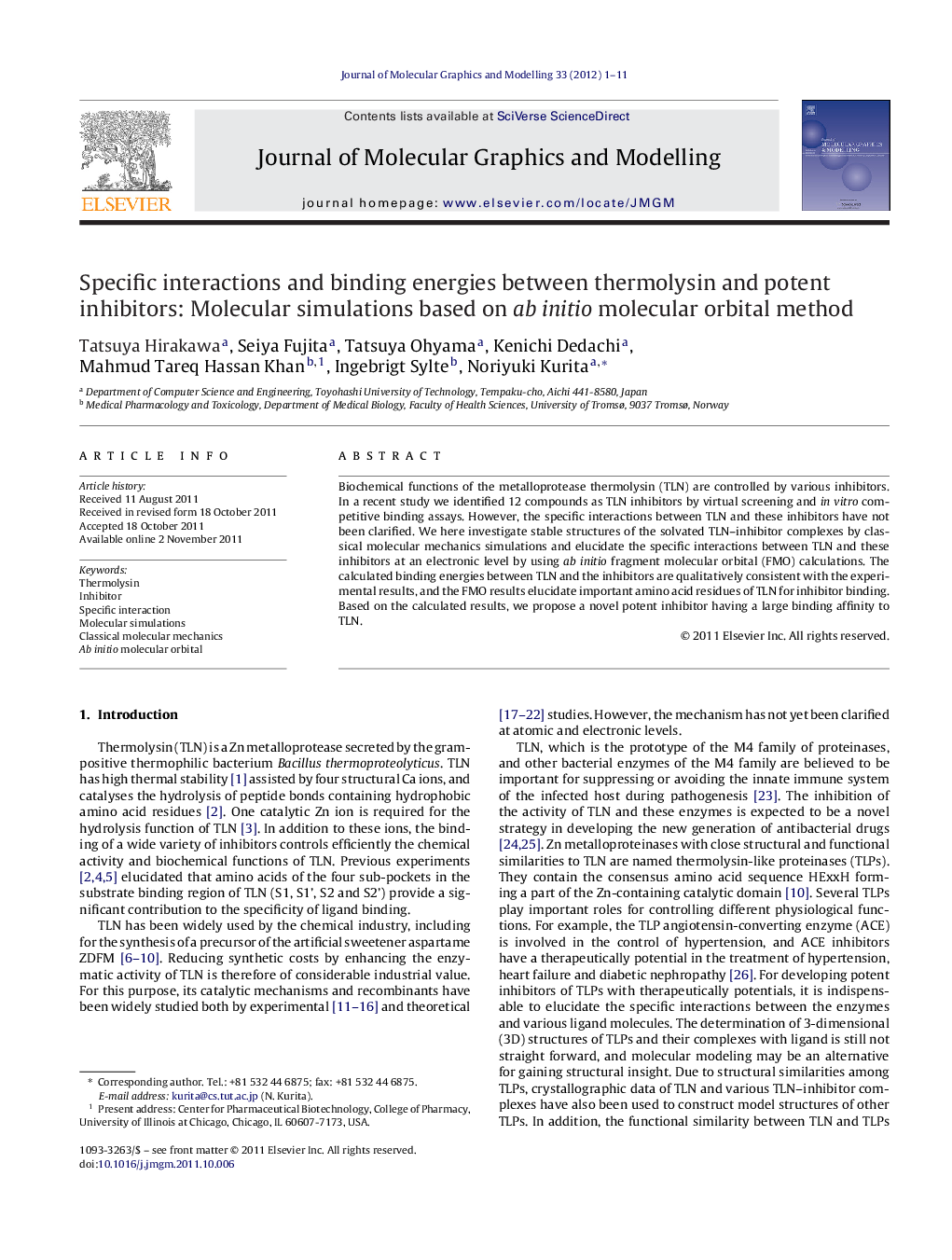| Article ID | Journal | Published Year | Pages | File Type |
|---|---|---|---|---|
| 444405 | Journal of Molecular Graphics and Modelling | 2012 | 11 Pages |
Biochemical functions of the metalloprotease thermolysin (TLN) are controlled by various inhibitors. In a recent study we identified 12 compounds as TLN inhibitors by virtual screening and in vitro competitive binding assays. However, the specific interactions between TLN and these inhibitors have not been clarified. We here investigate stable structures of the solvated TLN–inhibitor complexes by classical molecular mechanics simulations and elucidate the specific interactions between TLN and these inhibitors at an electronic level by using ab initio fragment molecular orbital (FMO) calculations. The calculated binding energies between TLN and the inhibitors are qualitatively consistent with the experimental results, and the FMO results elucidate important amino acid residues of TLN for inhibitor binding. Based on the calculated results, we propose a novel potent inhibitor having a large binding affinity to TLN.
Graphical abstractStructures of N2 ligand and the novel ligand N2(no chain) without the chain part of N2. N2(no chain) binds more strongly to TLN than N2 and can be a potent TLN inhibitor.Figure optionsDownload full-size imageDownload high-quality image (124 K)Download as PowerPoint slideHighlights► We investigate stable structures of the solvated thermolysin (TLN)–inhibitor complexes by molecular mechanics simulations. ► Specific interactions between TLN and inhibitor are investigated at an electronic level by using ab initio fragment molecular orbital (FMO) calculations. ► The calculated binding energies between TLN and the inhibitors are qualitatively consistent with the experimental results. ► FMO results elucidate important amino acid residues of TLN for inhibitor binding. ► We propose a potent inhibitor having a large binding affinity to TLN.
